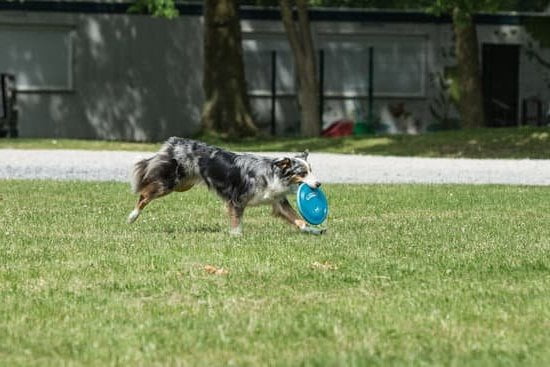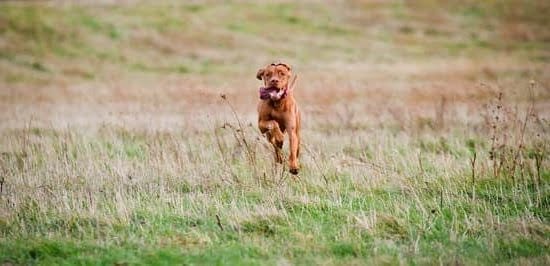Is your furry friend having a hard time understanding where to do their business? Are you tired of cleaning up accidents around the house? If so, it’s time to learn how to train your dog the potty command.
Potty training is an essential aspect of raising a well-behaved and happy canine companion. In this article, we will delve into the importance of potty training, as well as provide effective tips and methods to help you and your dog succeed in this crucial training endeavor.
Potty training is not only about maintaining a clean and odor-free home; it also helps establish a routine for your dog and fosters good behavior. By learning how to communicate effectively with your pet and utilizing positive reinforcement, you can create a harmonious environment for both you and your dog. With patience, consistency, and the right strategies, potty training can be an achievable goal for any responsible pet owner.
In the following sections, we will guide you through setting the foundation for successful potty training by establishing a routine and using positive reinforcement methods such as treats and praise. We will also explore crate training as a valuable tool in the potty training process. Additionally, we will address common setbacks such as accidents and offer tips on how to handle them with grace. So let’s dive in and explore the world of potty training.
Setting the Foundation
Establishing a routine and consistency is crucial when it comes to potty training your dog. Dogs thrive on routine, so creating a consistent schedule for feeding, bathroom breaks, and playtime will help them understand when they should go potty. Here are some key steps to setting the foundation for successful potty training:
- Designate specific potty times: Take your dog outside first thing in the morning, after meals, before bedtime, and every few hours throughout the day.
- Choose a designated potty area: Select a spot in your yard where you want your dog to go potty and always take them to that same spot.
- Monitor food and water intake: By controlling when your dog eats and drinks, you can predict when they will need to go potty.
Consistency is also key when it comes to establishing good potty habits. If you are consistent with your training methods and schedule, your dog will learn more quickly what is expected of them. Remember that accidents are inevitable during the training process, but staying consistent with the routine will help minimize setbacks.
Always remember to be patient with your furry friend as they learn this new skill. Additionally, it’s important to remain calm and positive during the training process, as dogs can pick up on their owner’s emotions. With patience and persistence in establishing a routine and consistency, your dog will master the potty training process in no time.
Remember that every dog is different, so what works for one may not work for another. Stay flexible and adaptable in your approach while keeping these fundamental steps in mind.
Positive Reinforcement
When it comes to potty training your dog, positive reinforcement is a highly effective method for encouraging good behavior. By using treats and praise, you can create a positive association with the desired behavior, making it more likely that your dog will continue to exhibit the behavior in the future.
Treats should be used as a reward for your dog when they successfully eliminate in the designated potty area. It’s important to use high-value treats that your dog finds especially enticing, as this will provide extra motivation for them. Additionally, verbal praise such as “good boy” or “good girl” should be given immediately after your dog has completed their business in the appropriate spot, reinforcing the positive behavior.
In addition to treats and verbal praise, some dogs may also respond well to physical affection such as petting or belly rubs. It’s important to identify what type of reinforcement your dog responds best to and use it consistently throughout the potty training process. By doing so, you are creating a strong incentive for your dog to continue exhibiting good potty habits.
| Method of Reinforcement | Effectiveness |
|---|---|
| Treats | Highly effective for most dogs |
| Verbal praise | An essential part of positive reinforcement |
| Physical affection (petting, belly rubs) | May be effective for some dogs |
The Potty Command
When it comes to potty training your dog, implementing a verbal cue can significantly enhance the training process. Choosing the right verbal cue and effectively implementing it can help your dog understand where and when they should go potty.
Choosing the Right Verbal Command
The first step in implementing a verbal cue for potty training is choosing the right command. It’s important to select a word or phrase that you are comfortable saying consistently and that your dog can easily understand. Common verbal cues for potty training include “Go potty,” “Do your business,” or “Potty time.” Choose a command that feels natural to you and makes sense for your household.
Implementing the Verbal Cue
Once you’ve chosen a verbal command, it’s essential to consistently use it when taking your dog outside for potty breaks. When you take your dog to their designated potty spot, use the verbal cue in a clear and positive tone. Repeat the command while your dog is in the act of going potty. Be patient and give them ample time to do their business while using the verbal cue repeatedly.
Reinforcing With Positive Encouragement
In addition to using a verbal cue, reinforce good behavior by offering treats and praise when your dog successfully goes potty after hearing the command. This positive reinforcement will help associate the verbal cue with the desired behavior, making it more likely that your dog will continue to respond to the command in the future.
Remember that consistency is key in effectively implementing a verbal cue for potty training, so be sure to use it every time you take your dog out for bathroom breaks.
Crate Training
Crate training is a valuable tool when it comes to potty training your dog. The crate serves as a safe and comfortable space for your pet while also providing a means to reinforce good potty habits. When used correctly, a crate can aid in teaching dogs to control their bladder and bowel movements, ultimately speeding up the house-training process.
It’s important to choose an appropriately-sized crate for your dog. The crate should be large enough for the dog to stand up, turn around, and lie down comfortably, but not so large that they can have accidents in one corner and then move away from it. Dogs are naturally den animals and will avoid soiling their living space if given the opportunity. This instinct can be used to your advantage when utilizing a crate for potty training.
It’s also crucial to create positive associations with the crate. Make the crate inviting by placing soft bedding inside and leaving the door open so your dog can explore at their own pace. Additionally, using treats or toys during this exploration period can help create positive associations with the crate from the start. Over time, your dog will come to see the crate as a safe haven rather than a place of confinement.
| Crate Training Tips | Benefits |
|---|---|
| Choose an appropriately-sized crate | Aids in faster house-training process |
| Create positive associations with the crate | Provides a safe and comfortable space for dogs |
| Utilize treats or toys during exploration period | Teaches dogs to control bladder and bowel movements |
Avoiding Punishment
Potty training can be a challenging process for both you and your dog, and it’s important to understand the negative effects that scolding and punishment can have on the training process. Here are some reasons why avoiding punishment is crucial for successful potty training:
- Creates fear and anxiety: Scolding or punishing your dog for accidents can create fear and anxiety, which can lead to other behavioral problems.
- Does not effectively teach desired behavior: Punishing your dog for peeing in the house may stop them from doing it in front of you, but it does not teach them where they should be going.
- Can damage the bond between you and your dog: Using punishment during potty training can create a negative association with the act of elimination, potentially damaging the bond between you and your pet.
Instead of using punishment, focus on positive reinforcement to encourage good behavior. This can include giving treats and praise when your dog goes potty outside, as well as establishing a routine and being consistent with training. By creating a positive environment for potty training, you can set your dog up for success without resorting to punishment.
Remember that accidents will happen during the potty training process, especially in the early stages. It’s important to remain patient and persistent, providing support and guidance for your dog as they learn where they should be going potty. With consistency and positive reinforcement, you can successfully train your dog without the need for punishment.
Dealing With Accidents
Understanding Accidents
It’s important to understand that accidents are a normal part of the potty training process, especially in the early stages. Dogs, just like humans, may not always be able to control their bladder or bowel movements, particularly when they are still learning. Additionally, accidents can also occur due to factors such as anxiety, illness, or changes in routine. Understanding this can help you approach accidents with patience and empathy.
Reacting to Accidents
When your dog has an accident indoors, it’s important to react calmly. Avoid scolding or punishing your dog as this will only create fear and anxiety, potentially leading to more accidents in the future. Instead, simply clean up the mess thoroughly using an enzymatic cleaner designed specifically for pet accidents. This will help remove the scent and discourage your dog from going in the same spot again.
Adjusting Your Approach
If you find that your dog is having frequent accidents despite consistent training efforts, it may be necessary to reevaluate your approach. Consider adjusting the frequency of potty breaks, providing more supervision, or revisiting crate training techniques.
It’s also a good idea to consult with a professional trainer or veterinarian to rule out any underlying medical issues that may be contributing to the problem. Remember that every dog is different, and some may require more time and patience than others when it comes to potty training.
Patience and Persistence
Training your dog to follow the potty command requires patience and persistence. It’s essential to understand that every dog learns at their own pace, and consistency is key to successful potty training. It’s important not to get frustrated if your dog doesn’t catch on right away, as this can negatively impact their learning process. Instead, remain patient and keep working with them consistently.
Consistency is crucial when teaching your dog the potty command. This means taking them out at the same times every day, using the same verbal cues, and providing positive reinforcement for good behavior every time. Dogs thrive on routine, so establishing a consistent potty training routine will help them understand what is expected of them. Additionally, consistency will also help prevent confusion and make the training process smoother for both you and your dog.
During the training process, it’s important to remember that setbacks and accidents may occur. This is completely normal and should be expected, especially during the early stages of training. Instead of getting discouraged, use these moments as opportunities to reinforce good habits.
Stay patient and continue providing positive reinforcement for good behavior while addressing accidents in a calm and assertive manner. Remember that potty training takes time, so patience and persistence are key to achieving success in this area of training.
Conclusion
In conclusion, potty training your dog is a challenging but ultimately rewarding process. By understanding the importance of potty training and establishing a routine, you are setting your dog up for success in the long run. Utilizing positive reinforcement, such as treats and praise, can encourage good behavior and make the training process more enjoyable for both you and your furry friend.
Implementing a verbal cue for potty time and utilizing crate training as a safe space are effective ways to facilitate the learning process. It is crucial to remember to avoid punishment and remain patient and persistent throughout the training journey. Accidents may happen, but it’s important to handle them with grace and continue with the training process without becoming discouraged.
Finally, celebrating small successes along the way is essential in maintaining good potty training habits. By following these steps and staying consistent, you will set your dog up for success and ensure a happy, healthy relationship between you and your pet. Congratulations on taking the first steps towards successful potty training.
Frequently Asked Questions
How Do I Get My Dog to Tell Me He Has to Pee?
Getting your dog to tell you when he needs to pee involves training him to communicate his needs. One effective method is to teach him to ring a bell hung on the door when he needs to go outside. Start by associating the bell with going out, then reinforce this behavior consistently until it becomes a reliable signal.
What Are the Words for Potty Training Dogs?
The key words for potty training dogs are typically “outside,” “potty,” or any other command you choose as long as it’s consistent and easily understood by your dog. Consistency in using the same word or phrase each time you take your dog out will help them understand what is expected of them.
How Long Does It Take to Teach a Dog to Potty Train?
The time it takes to potty train a dog can vary depending on the individual dog and their breed, age, and previous habits. Generally, it can take anywhere from a few weeks to several months for a dog to be fully potty trained.
Consistent training, patience, positive reinforcement, and taking the dog out frequently are key factors in successfully teaching a dog where to go potty.

Welcome to the blog! I am a professional dog trainer and have been working with dogs for many years. In this blog, I will be discussing various topics related to dog training, including tips, tricks, and advice. I hope you find this information helpful and informative. Thanks for reading!





